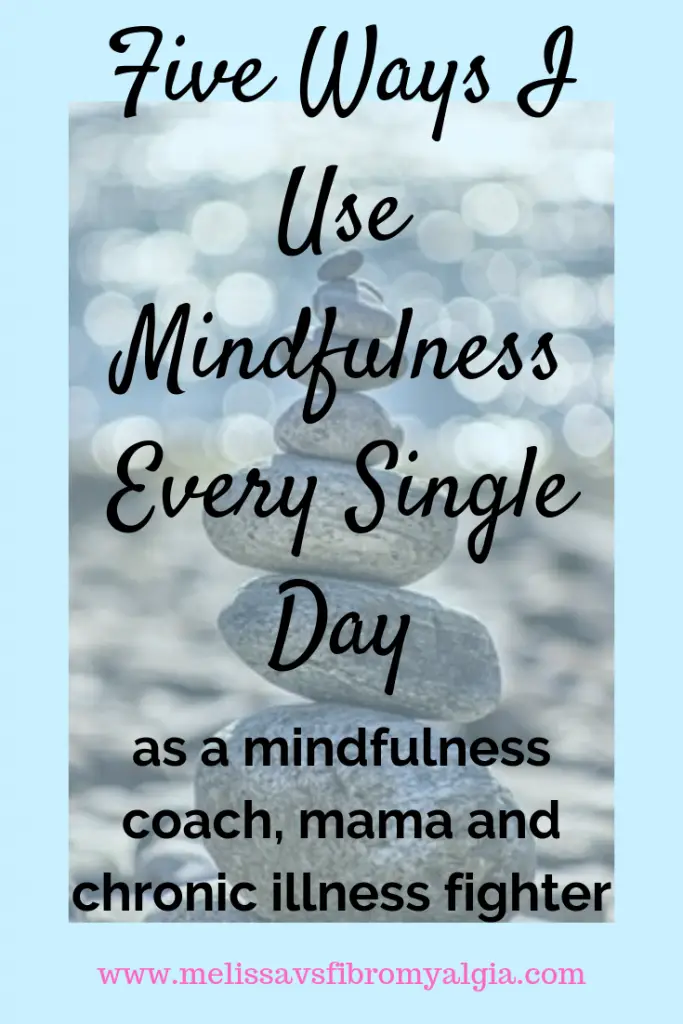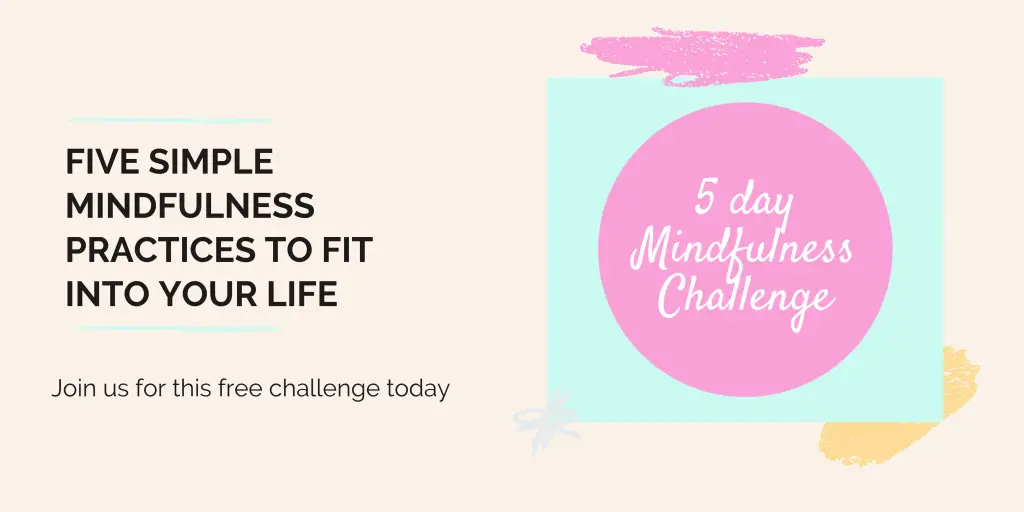Last Updated on December 13, 2021 by melissanreynolds
As a person who has practiced mindfulness in one way or another for several years, offers mindfulness as part of my coaching programmes and has a course dedicated to mindfulness and meditation for chronic pain and fatigue, I thought it was time to share how I use it myself every single day.
Initially I began using meditation as a gateway to profound rest which I could not achieve any other way. But as I have learnt more and practiced more it has begun to be so much more. It transcends the boundaries of a “treatment” for chronic pain, fatigue and insomnia. It helps me in every part of my life.
Affiliate notice: Some of my links may be affiliate links. If you make a purchase using my link, I will make a commission at no extra cost to you.

Here are five ways I use mindfulness every single day
Breathing
I breath to relax, to help me get off to sleep, to avoid or reduce the stress response. You can use the simple 4-2-6 recipe for the simplest stress reduction technique. See my YouTube video below on this breathing. Breathing is as undervalued as it is vital. We need to breathe better to hep us switch on the parasympathetic nervous system and to switch off increased tension and pain in the chest and neck.
Mindful Parenting
When my son seems to be getting overwhelmed, or he wakes with a bad dream and panics or when his behaviour is getting over the top we take mindful breaths together. I also use it to try to regulate my response to the frustrations that arise when parenting three very busy boys.
Meditation
Every day after lunch I meditate. It is how I have coped with the intense sleep deprivation of my third baby – who is the worse of the three with sleeping. Yoga Nidra refreshes me, restores me and gives me profound rest I haven’t found any other way. It has been key in reducing my central nervous system over activation of a period of many years.

Mindful Curiosity
A good way to manage chronic illness is to be mindfully curious. Pay attention to what may be causing certain results – like increased pain and fatigue. To also be mindful during movement so we don’t add to our body’s physical burden. Be aware of our emotional and spiritual components too – we are a whole person, not just a physical being. Taking a mindful pause to really listen to others can be so useful in maintaining healthy relationships.
Body Scan Relaxation
I take body scan relaxations when I am first going to sleep and when I am trying to get back to sleep in the night. By paying attention to each part of my body in turn and then inviting it to relax, I tune into my body. I remember it is part of me, even when I’d rather distance myself from the parts with the most pain. My neck is the part I spend the most time visualising. It is much more productive to spend time checking in with your body than stressing that you are not yet asleep. Even if you don’t fall asleep (and I always do) then you will have achieved rest, which is far better than getting frustrated about insomnia and/or pain.
As you can see mindfulness encompasses a range of things. It is truly a cornerstone of my wellness plan. I really hope you can see the benefits of incorporating it into your personal plan for wellness.
What is your favourite mindfulness practice?
